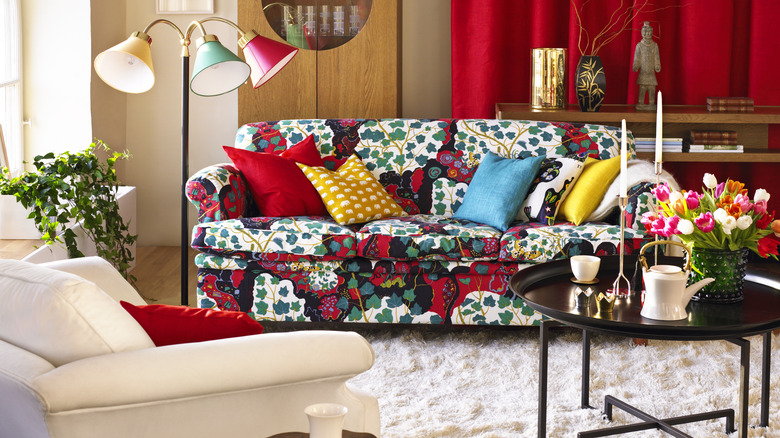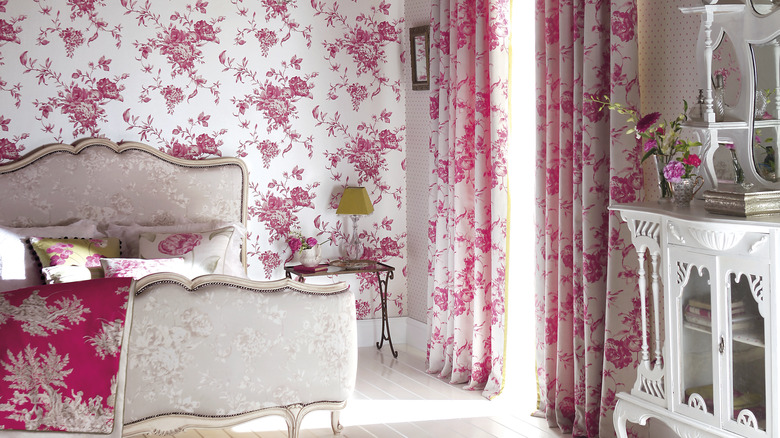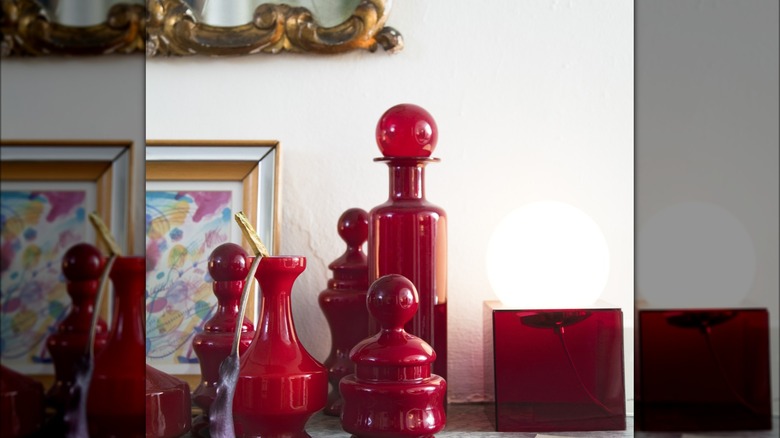What Not To Do When Decorating With Maximalist Decor Style
Maximalist decor has a keen reverence for eclectic spaces filled with a lot of personality. While less of a distinct style than a strategy for decorating a room, recent maximalist-friendly trends, like cottage style and grandmillennial home design, are putting a dent in the popularity of minimalist rooms decked out in all neutrals. The decor's mix of colors, patterns, textures, and objects can surprise and delight, ensuring there's something new to behold at all turns. But there can be too much of a good thing, with maximalist styles sometimes in danger of becoming cluttered, chaotic, and overwhelming. So, keep a few things in mind and don't go overboard with elements like paint color. Also, don't ignore the overall style of a room when choosing decorations for a maximalist space.
Unlike minimalist spaces, maximalist decor coaxes you to add more elements to a room, increasing your chances of getting things wrong. But it also offers a lot of opportunities for getting it right. Carefully curated rooms can allow self expression, creating a cohesive story through color, patterns, textures, and the objects you add as you incorporate maximalism into your home.
Don't go overboard with colors, patterns, and textures
While a well-created maximalist color palette can host a lot of colors in close proximity, there are some general guidelines that can make a room look intentional and cohesive rather than chaotic and visually overwhelming. One of these is attention to your usage of color. Avoid shades that are jarring, vary too far from other hues in the room, and draw immediate attention, like a bright red vase in a room that features mostly pastels or muted shades. Use the color wheel as inspiration to choose complementary and contrasting tones.
If your entire home sports maximalist decor, disperse the colors you want to use, creating a seamless transition from one room to the next. This prevents jarring transitions between spaces. You can make subtle variations in each room, but sticking to a basic color palette for most things will help unify the design scheme. In a single room or space, having the same colors appear throughout can help guide the eye from object to object and make things look deliberate rather than chaotic.
The same holds true for patterns. They're a great way to stick to your "few colors" scheme, but add a more layered sense of variety. Further, don't have too many disparate patterns in a space without something tying them together, such as a base color or scale of print. An abundance of texture can also add a bit more dimension to the room without increasing the number of colors.
Don't ignore the room's aesthetics or the displayed items
While maximalist rooms are eclectic by nature, it might turn overwhelming if there's no visible or identifiable design scheme. This is usually the result of too many different styles, eras, and aesthetics competing in a single space. Although you have the freedom to choose decor and blend things together per your preference, some people veer off course, winding up with a mishmash of influences and eras that don't particularly complement each other.
When combining styles, stick to those that have traditionally blended well together, like the boho and beachy style or farmhouse and industrial. These can be wound together to unique spaces with a creative spin on their original styles. They'll also tell a cohesive story about the home's inhabitants through the chosen decor. Focus on communicating the narrative you want to present about objects you love rather than randomly adding items to a room.
The number of objects in a maximalist room can also be overpowering, especially if there are a lot of small items involved, like knickknacks and keepsakes. You can remedy this by grouping and layering items with lots of space around them to rest the eyes. Alternatively, mix them among other elements, like baskets and plants, to create small tableaus. You can also group like things together and rotate your decor seasonally or periodically to add visual interest.


